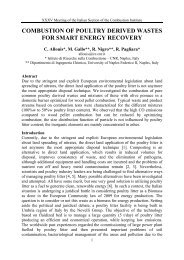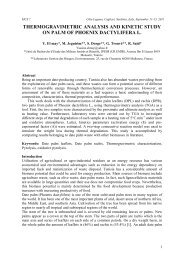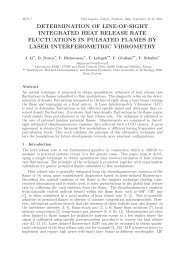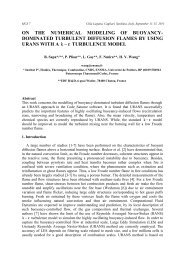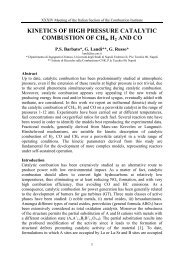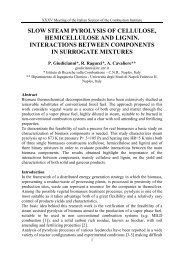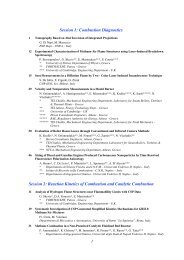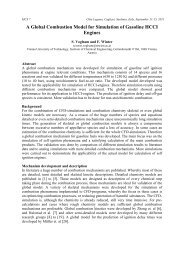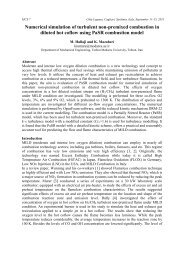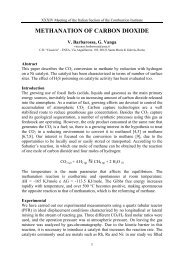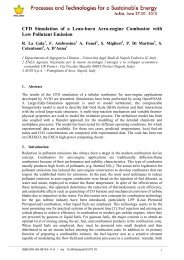RANS Study of Hydrogen-Air Turbulent Non-Premixed Flames
RANS Study of Hydrogen-Air Turbulent Non-Premixed Flames
RANS Study of Hydrogen-Air Turbulent Non-Premixed Flames
Create successful ePaper yourself
Turn your PDF publications into a flip-book with our unique Google optimized e-Paper software.
Ischia, June, 27-30 - 2010<br />
Figure 3 shows results performed with U<strong>RANS</strong> simulations for the three different injection<br />
velocities configurations. For each <strong>of</strong> them gravity effect was considered by comparing<br />
simulations with the gravity force included (on the left <strong>of</strong> each couple) and not (on the right).<br />
These first results can be summarized with three mean features:<br />
flame length increases when the inlet velocity increases,<br />
gravity field makes the flame shorter,<br />
but this effect is more evident for low injection velocities.<br />
Physics interpretation <strong>of</strong> this behavior can be found recalling Froude number definition and<br />
considering that increasing inlet velocity means increasing initial momentum flux with<br />
respect to buoyant forces (i.e. Froude number): flame length (associated with the momentum<br />
flux) increases. The second feature can be interpreted intuitively: gravity force acts opposing<br />
to the flow motion and the flame is strongly affected due to the low hydrogen density value.<br />
4. Temperature and velocity fields<br />
Thermal field analysis, predicted by U<strong>RANS</strong> simulations, show a well anchored flame with<br />
the combustion initially limited to the thin shear layer where hydrogen and air mix. A cold<br />
zone (blue depicted) can be identified, where only fuel exists and is generally called inertial or<br />
potential core. Maximum temperature is reached on the axis, on a location increasing as<br />
velocity injection increases. Buoyancy effects are evidenced by the presence <strong>of</strong> external<br />
vortices at low axial locations. Fig. 6 shows instantaneous temperature fields comparing the<br />
case with gravity force included with the one in absence <strong>of</strong> gravity.<br />
Fig. 4<br />
Instantaneous temperature fields for the three different cases: on the left is depicted<br />
the case with .<br />
5. Flame – vortex interaction<br />
An instantaneous iso-temperature color visualization <strong>of</strong> the computed flame (U H2 = 106 m/s, no<br />
gravity) is shown in Fig. 5a. It should be pointed out that no artificial perturbations were intro-<br />
3



